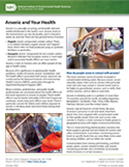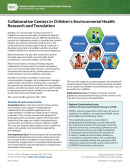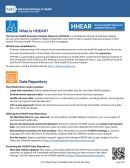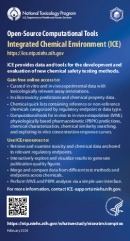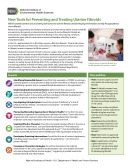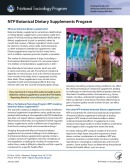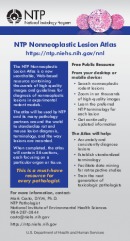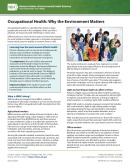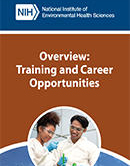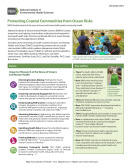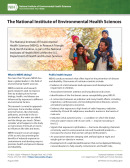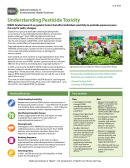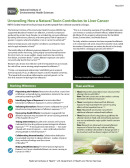The NIEHS Office of Communications and Public Liaison produces fact sheets and other educational materials about a variety of important topics in environmental health sciences. All materials below are available as PDFs to read online, download, or print.
Air Pollution and Your Health
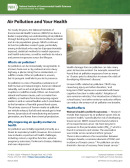
NIEHS continues to fund air pollution research gaps, particularly among individuals who may be disproportionately exposed, statistical methods to model exposures and health outcomes, as well as methods to reduce and prevent exposures across the lifespan.
Arsenic and Your Health
Asbestos: Worker and Employer Guide to Hazards and Recommended Controls
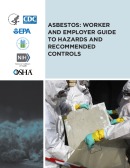
Asbestos is a mineral fiber that occurs in rock and soil. Because of its fiber strength and heat resistance, asbestos has been used in many materials produced for building or home construction, particularly if they were manufactured prior to 1980, such as shingles, ceiling and floor tiles, and attic and pipe insulation. If these materials are broken, crushed, or disturbed, the asbestos fibers may be released into the air and become a health hazard. High exposures to asbestos may occur during demolition and rebuilding.
Asthma and Its Environmental Triggers
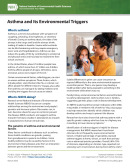
Asthma is a chronic lung disease with symptoms of coughing, wheezing, chest tightness, or shortness of breath. During an asthma attack, the sides of the airways in the lungs swell and the airways shrink, making it harder to breathe.
Last Updated:
Related Health Topic(s):
AsthmaEn Espanol:
El asma y sus desencadenantes medioambientalesAutoimmune Diseases and Your Environment
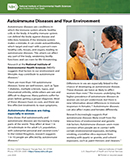
A healthy immune system defends the body against disease and infection. But if the immune system malfunctions, it mistakenly attacks healthy cells, tissues, and organs. Called autoimmune disease, these attacks can affect any part of the body, weakening bodily function and even turning life-threatening
Breast Cancer: Why the Environment Matters
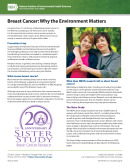
NIEHS plays a leadership role in funding and conducting studies on the ways in which genetic and environmental factors may affect breast cancer risk. Understanding these factors presents tremendous opportunity for disease prevention.
Last Updated:
Related Health Topic(s):
Breast CancerCell Phone Radio Frequency Radiation Studies

Cell Phone Radio Frequency Radiation Studies
Last Updated:
Related Health Topic(s):
Cell Phone Radio Frequency RadiationChildren’s Health – Why the Environment Matters
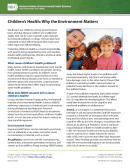
NIEHS research leads to discoveries about how the environment affects children’s health, which, in turn, become a basis for ways to reduce or stop harmful exposures. Because children are smaller than adults, their risk for harm is greater when exposed to harmful environmental factors. They are more vulnerable to toxic effects because their brains and other organs are still developing.
Last Updated:
Related Health Topic(s):
Children's Environmental HealthCollaborative Centers in Children's Environmental Health Research and Translation
Cosmetics and Your Health: NIEHS Research Findings
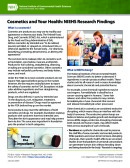
Millions of women and men around the world use cosmetics to enhance or change their appearance. The common term makeup refers to cosmetics such as foundation, eye shadow, eye liner, mascara, blush, and lipstick. Other cosmetics may include nail polish, body wash and moisturizers, perfumes, and hair coloring or styling products.
Drinking Water and Your Health
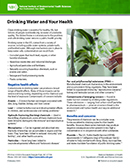
Drinking water in the U.S. comes from a variety of sources, including public water systems, private wells, or bottled water. Worldwide, nearly 2 billion people drink contaminated water that could be harmful to their health. Though more of a concern in developing countries, safe drinking water is a U.S. public health priority.
Last Updated:
Related Health Topic(s):
Safe Water and Your HealthEn Espanol:
Agua apta para el consumo humano y su saludEndocrine Disruptors and Your Health
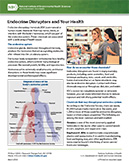
Endocrine disruptors are natural or human-made chemicals that may mimic or interfere with the body’s hormones, known as the endocrine system.
Environment and Health A to Z
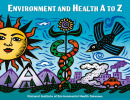
No two people live in the exact same environment. The SOIL beneath our feet, the AIR we breathe, and the WATER flowing through our pipes and waterways can all differ greatly, depending on where we live. On top of that, each of us eats different foods, shares our space with different plants and animals, and has access to different medicines and technology. NIEHS explores the connections between the environment and health, gathering scientific knowledge to help prevent human disease.
Last Updated:
Related Health Topic(s):
Asthma, Hazardous Material/Waste, Reproductive Health, Gene and Environment InteractionEn Espanol:
Medio Ambiente y Salud, A FondoFlame Retardants
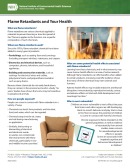
Flame retardants are various chemicals applied to materials to help prevent burning or slow the spread of fire. The term applies to the function, not a specific composition, of such chemicals.
HHEAR Handout
Integrated Chemical Environment (ICE) and Open Structure-activity/property Relationship App (OPERA)
Lead and Your Health
Lung Health and Your Environment
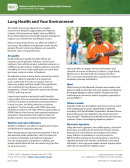
Research supported by NIEHS shows that protecting lung health requires strategies to improve our environment and lifestyle choices.
Microbiome
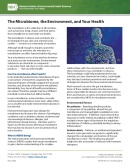
The microbiome is the collection of all microbes, such as bacteria, fungi, viruses, and their genes, that naturally live on and inside our bodies. The microbiome is diverse, and each body site, for example, the gut, skin, and oral and nasal cavities, is home to a community of microbes.
Mold and Your Health
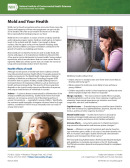
Molds can be found everywhere and we encounter them every day. Spores and fragments of these microorganisms can get into the air we breathe.
New Tools for Preventing and Treating Uterine Fibroids
NIEHS Scholars Connect Program
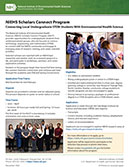
The NIEHS Scholars Connect Program provides opportunities for undergraduate students from underrepresented groups, who are focused on science, technology, engineering, and mathematics (STEM), to connect with the NIEHS community and engage in emerging areas of research, training, and career-oriented activities.
NIEHS Summer Internship Program
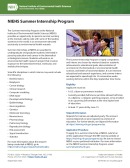
The Summer Internship Program at the National Institute of Environmental Health Sciences (NIEHS) provides an opportunity to spend a summer working at the institute, side by side with some of the leading scientists in the world, in an environment devoted exclusively to environmental health research.
NIH Disaster Research Response (DR2) Program
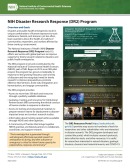
The National Institutes of Health Disaster Research Response (DR2) program leads U.S. efforts and works with global partners to improve capacity for timely research related to disasters and public health emergencies. NIEHS coordinates the program. Disasters and public health emergencies result in unique combinations of human exposures to toxic substances, hazards, and stressors; yet too often, basic questions about the health and safety of communities, responders, and workers affected by these events go unanswered.
NTP Botanical Dietary Supplements Program
NTP Chemical Effects in Biological Systems (CEBS)
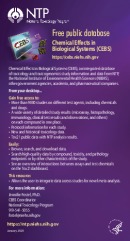
Chemical Effects in Biological Systems (CEBS), an integrated database of toxicology and toxicogenomics study information and data from NTP, National Institute of Environmental Health Sciences (NIEHS), other government agencies, academia, and pharmaceutical companies.
NTP Nonneoplastic Lesion Atlas
Occupational Health: Why the Environment Matters
Overview: Training and Career Development Opportunities
Postdoctoral Training at NIEHS
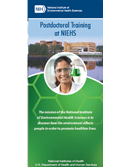
The National Institute of Environmental Health Sciences (NIEHS) is one of 27 institutes and centers of the National Institutes of Health, which is part of the U.S. Department of Health and Human Services. Unlike the majority of NIH institutes located in Bethesda, Maryland, NIEHS is located in Research Triangle Park, North Carolina, a major U.S. center of biotechnology and health research.
Protecting Coastal Communities from Ocean Risks
Report on Carcinogens, The
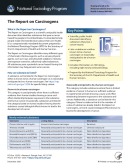
The Report on Carcinogens is a scientific and public health document that identifies substances that pose a cancer hazard for people in the United States. It is intended to help people make informed decisions about their own health.
Reproductive Health and Your Environment
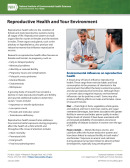
Reproductive health refers to the condition of female and male reproductive systems during all stages of life.
SRP-Funded Research Improves Public Health
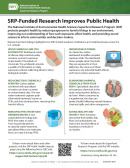
The National Institute of Environmental Health Sciences Superfund Research Program (SRP) protects people’s health by reducing exposure to harmful things in our environment, improving our understanding of how such exposures affect health, and providing sound science to inform communities and decision-makers.
Superfund Research Program
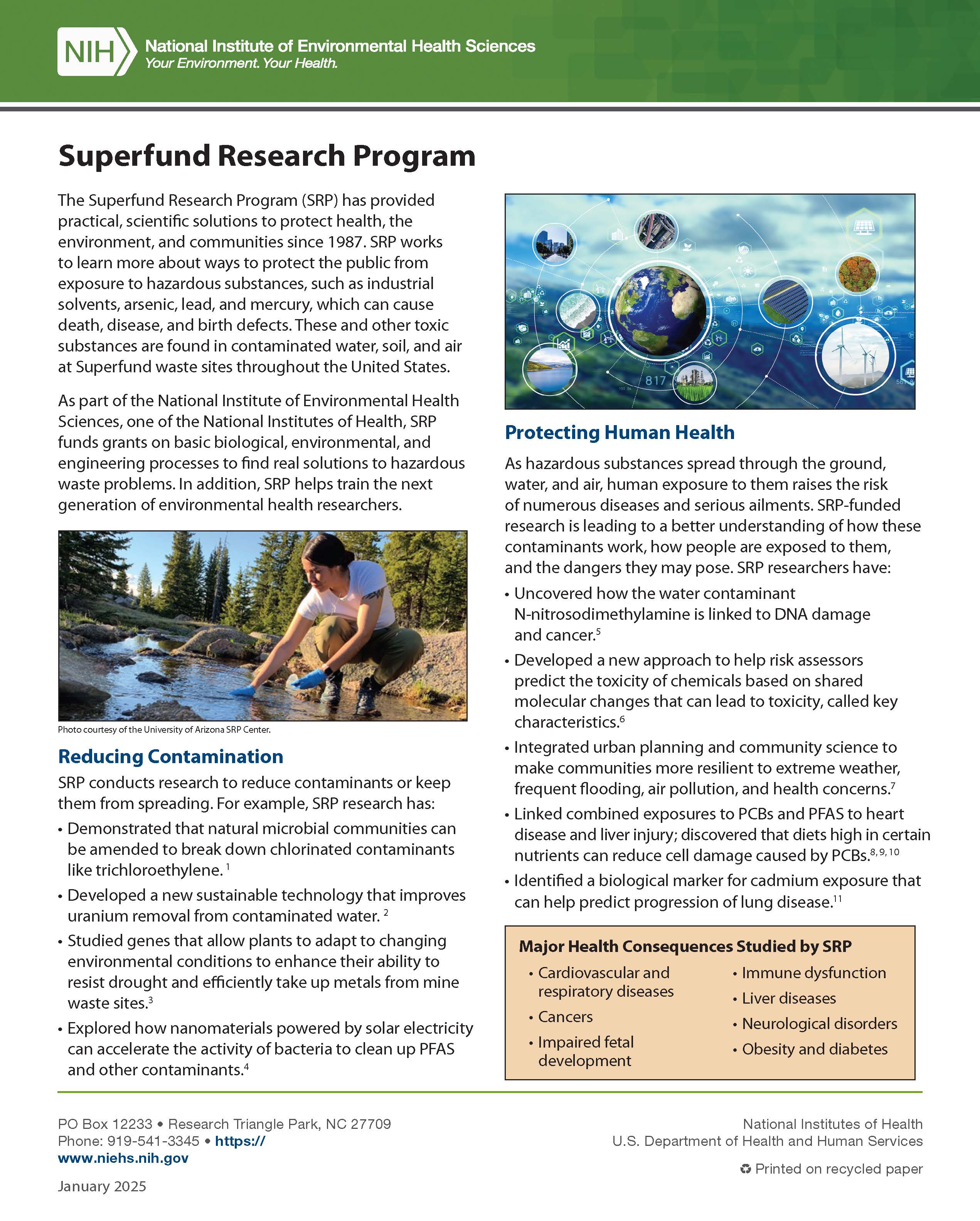
The Superfund Research Program (SRP) has provided practical, scientific solutions to protect health, the environment, and communities since 1987. SRP works to learn more about ways to protect the public from exposure to hazardous substances, such as industrial solvents, arsenic, lead, and mercury, which can cause death, disease, and birth defects. These and other toxic substances are found in contaminated water, soil, and air at Superfund waste sites throughout the United States.
Systematic Review
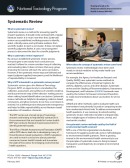
Systematic review is a method for answering specific research questions. It should not be confused with a regular literature search. It is much more than that. Systematic review uses a predefined, multistep process to identify, select, critically assess, and synthesize evidence from scientific studies to reach a conclusion.
The National Institute of Environmental Health Sciences
Tox21: Toxicology Testing in the 21st Century
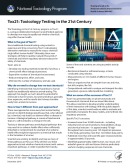
The Toxicology in the 21st Century program, or Tox21, is a unique collaboration between several federal agencies to develop new ways to rapidly test whether chemicals may affect human health.
Understanding Pesticide Toxicity
Unraveling How a Natural Toxin Contributes to Liver Cancer
Worker Training Program
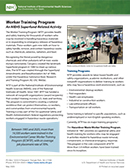
The Worker Training Program (WTP) provides health and safety training for thousands of workers who may be involved in handling hazardous materials or in responding to emergency releases of hazardous materials. These workers gain new skills on how to safely handle, remove, and contain hazardous waste, such as chemicals, asbestos, radiation, and lead.



